
- Planfix AI Agent Dataminer: AI Data Extraction for Forms
- Planfix AI Agent Summarizer for Tasks
- Setting Up the Dataminer AI Agent for Task Automation
- Connecting Dataminer to Tasks
- Tips for Using AI to Automate Tasks with Dataminer
- Setting Up the Summarizer AI Agent
- The Role of AI Agents in the Planfix Ecosystem
- Future of AI in Workflow Automation with Planfix
While some folks still worry that AI will take their jobs, the team at Planfix has decided to flip that script and give AI a job instead. We’re not talking about the creative, strategic work humans enjoy, but the tedious, repetitive tasks everyone keeps postponing with a hopeful “I’ll do it later.” We all know how “later” usually goes.
Meet the Planfix AI Agents. These are the teammates who never miss deadlines, never get tired, and never ask for a coffee break. (Though if they did, we’d gladly make them one). Let’s look at how they work and why we built them.
Simply put, an AI Agent in Planfix is a small robot with a clear mission and an “On” switch. You pick its mission, assign it to a task, and it quietly gets to work. There’s nothing else for you to do, because it’s all powered by Planfix AI under the hood.
We’re starting with two agents: Dataminer and Summarizer. They may be small, but they’re also mighty. Right now, they handle only a few field types, but they’re already smart enough to make your daily routine a bit easier. Go to Employees → Robots and flip the toggle to bring your first AI Agent to life.
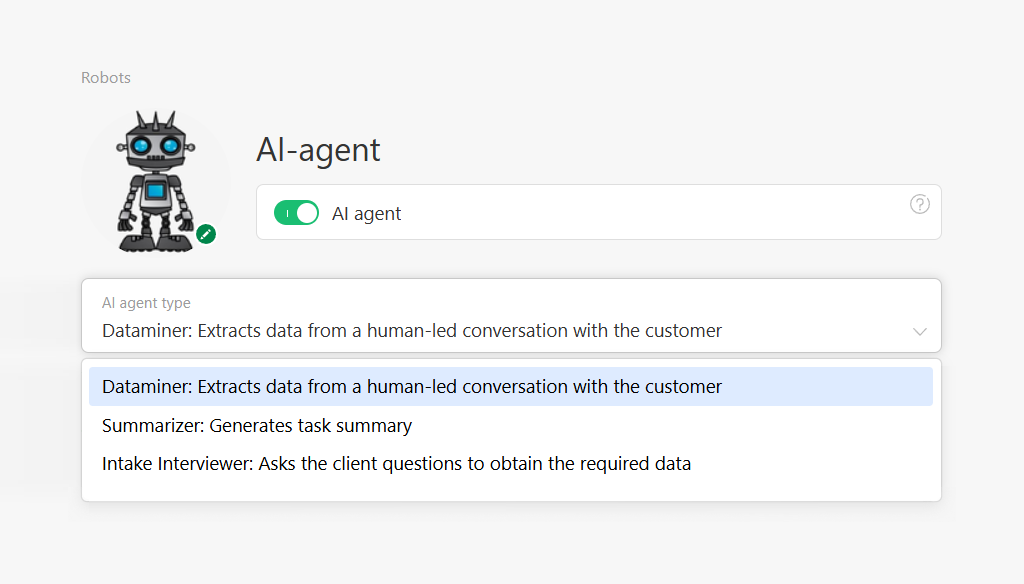
No robots yet? It’s just as easy to create one and instantly upgrade it to AI status. It’s a small step for you, but a massive leap for your productivity. Now, let’s look at our two agents in a bit more detail.
Planfix AI Agent Dataminer: AI Data Extraction for Forms
Dataminer scans incoming forms or chat messages, extracts useful details, and then accurately fills the correct fields for you.
It’s especially helpful when data comes from social media or messenger integrations. You know, the sorts of conversations that are full of emojis, side notes, and polite “thank yous.” Dataminer finds the information you need and discards the rest, keeping your CRM organized and clean.
Planfix AI Agent Summarizer for Tasks
The Summarizer truly lives up to its name by keeping a running summary of all activity within a task. Whenever someone comments, the agent analyzes the new information and updates a dedicated field with the current status or agreements.
So, instead of scrolling through twenty messages, you can instantly see where things stand. It’s like walking into a meeting and immediately getting a “what’s the latest?” recap, without having to ask. Dataminer and Summarizer and are just the beginning. More AI Agents are already in development, and each of them is being designed to handle its own specific role and tasks.
Setting Up the Dataminer AI Agent for Task Automation
In Planfix, every robot has a secret superpower: it can evolve into an AI agent. Think of it like the movie The Matrix, but instead of chasing Neo, these agents chase your routine. To get started, visit agent management at Employees → Robots. This is your robot workers’ “home base.”
Step 1: Activate AI Agents for CRM Automation
First, flip the AI Agent switch to unlock the configuration panel:
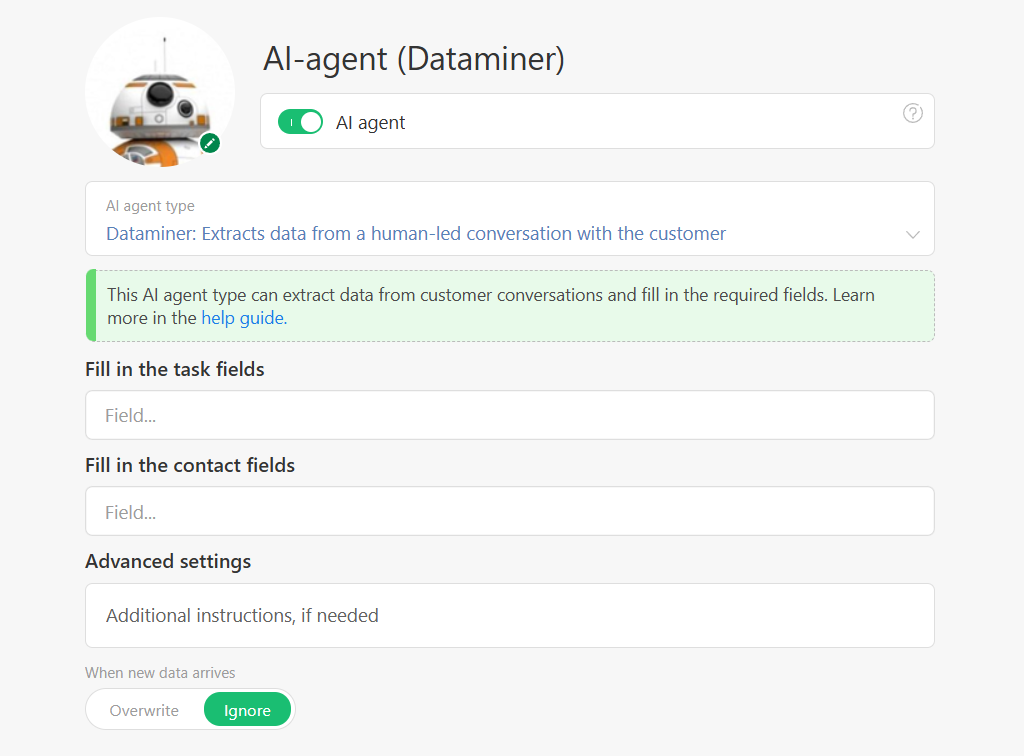
Next, choose your agent’s type. This will be its specialization or mission. And because every agent needs a job, this step is mandatory.
Step 2: Configure Fields for AI-Based Data Extraction
Next, decide which custom fields your agent should fill in.
At this stage, the menu is short but capable of generating powerful results. It includes Number, Line, Text, List, and Set of Values. You need to specify the fields, otherwise the agent won’t know what data to collect or where to put it. There’s also a helpful option that tells the agent to overwrite or ignore previous values if new info comes in.
Step 3: Define Actions for AI Workflow Automation
Here’s where fine-tuning happens. Under “Advanced settings,” you can add your own instructions. These are specific rules that tell the agent precisely how to fill the fields. If you’ve read our note on automatic request qualification, this part will feel familiar. Still, it’s worth repeating: this step is optional. Planfix AI will handle field completion on its own. However, if you have custom exceptions or special logic, this is where you can add them.
Connecting Dataminer to Tasks
Once your Dataminer is set up, you need to add it to your tasks as a participant or assignee.
The most straightforward approach is to add Dataminer directly to your task template while configuring the Object. This way, every new task will automatically include a built-in helper ready to go. Now, as soon as the task is created, Dataminer will scan messages from the contact, extract the details, and neatly fill in the appropriate fields.
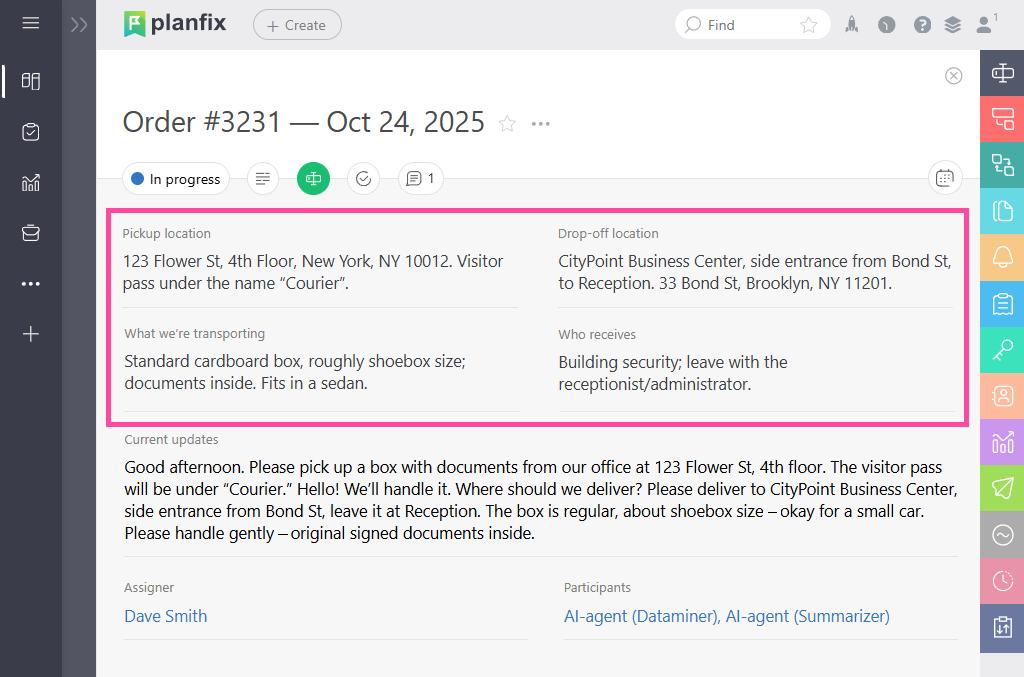
Tips for Using AI to Automate Tasks with Dataminer
Once Dataminer finishes extracting the data, you can use it as is or fine-tune it. The second option is helpful if you notice something needs polishing. Either way, you’ll spend much less time handling each request manually.
While we’re on the subject, here’s a neat trick: Dataminer can double as a lightweight data parser when you don’t want to dive into info blocks or complex email parsing.
It works like this. Your website sends a form to a virtual Planfix email address. That email automatically creates a new task based on an Object that already includes Dataminer as a participant. From there, the agent takes over! It will analyze the incoming message and sort the data into the correct task fields.
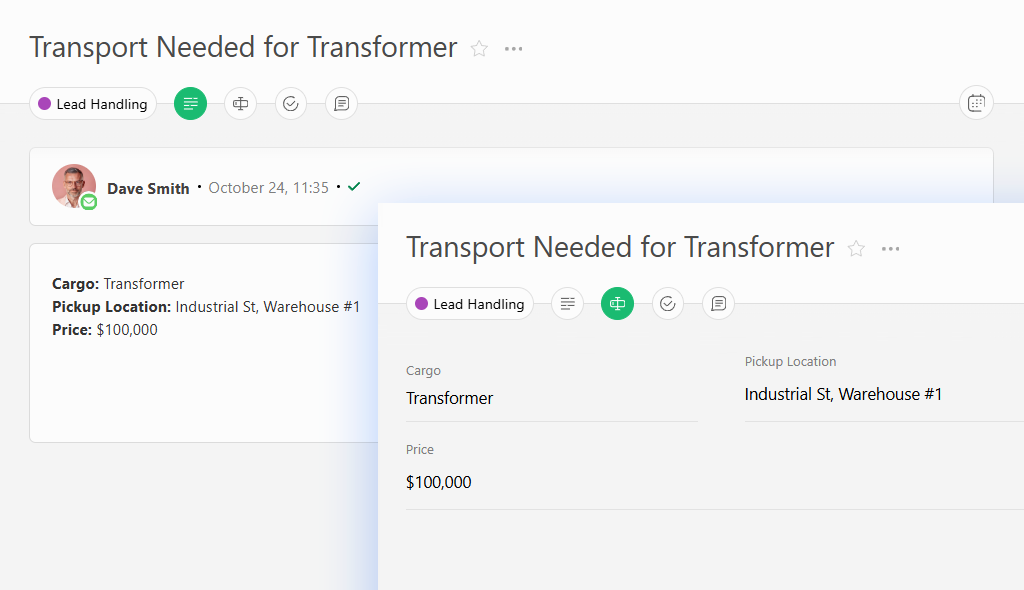
Need something more advanced? For deep automation or layered workflows, info blocks are the way to go. This is because they give you extra flexibility. Need something quick and reliable that works right away? Dataminer is your best option.
Setting Up the Summarizer AI Agent
The Summarizer sets up almost the same way as the Dataminer. However, there are a few important twists.
- First, unlike Dataminer, which focuses on messages from contacts, the Summarizer reviews every comment added to the task.
- Second, configuration is more straightforward. You only need to choose the agent type and one field where it will store the summary. In most setups, that’s a custom Text field:
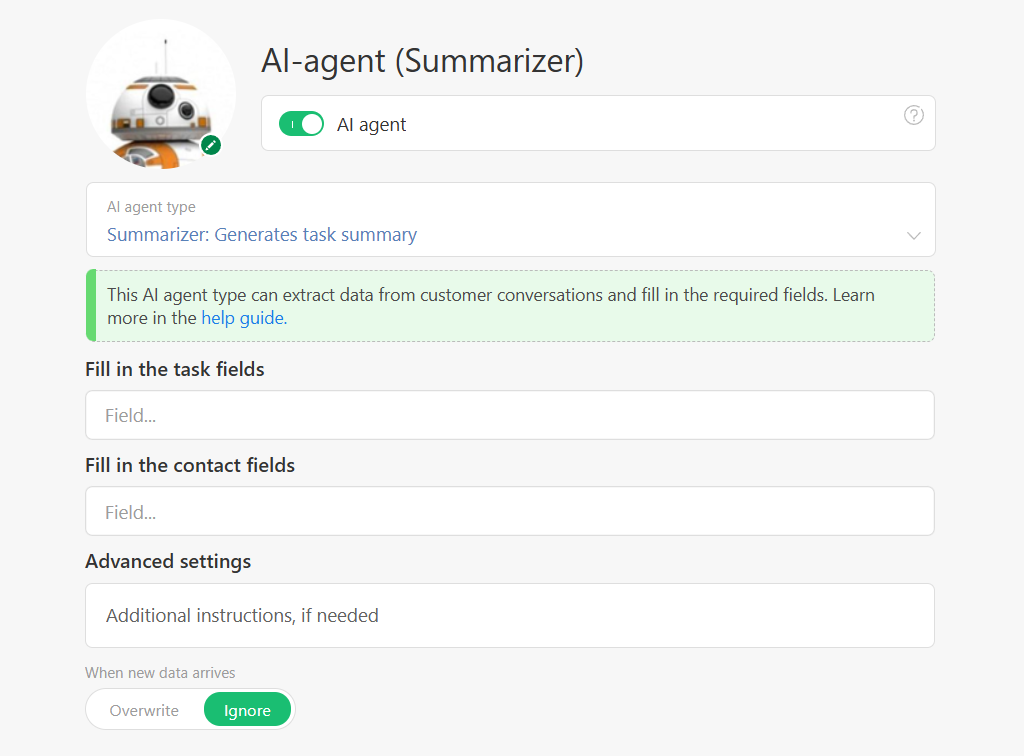
- Third, you can invite the Summarizer to a task at any time, even if it’s been active for weeks. Once added as a participant or assignee, it will automatically read all past comments and create a clear, up-to-date summary of what’s going on
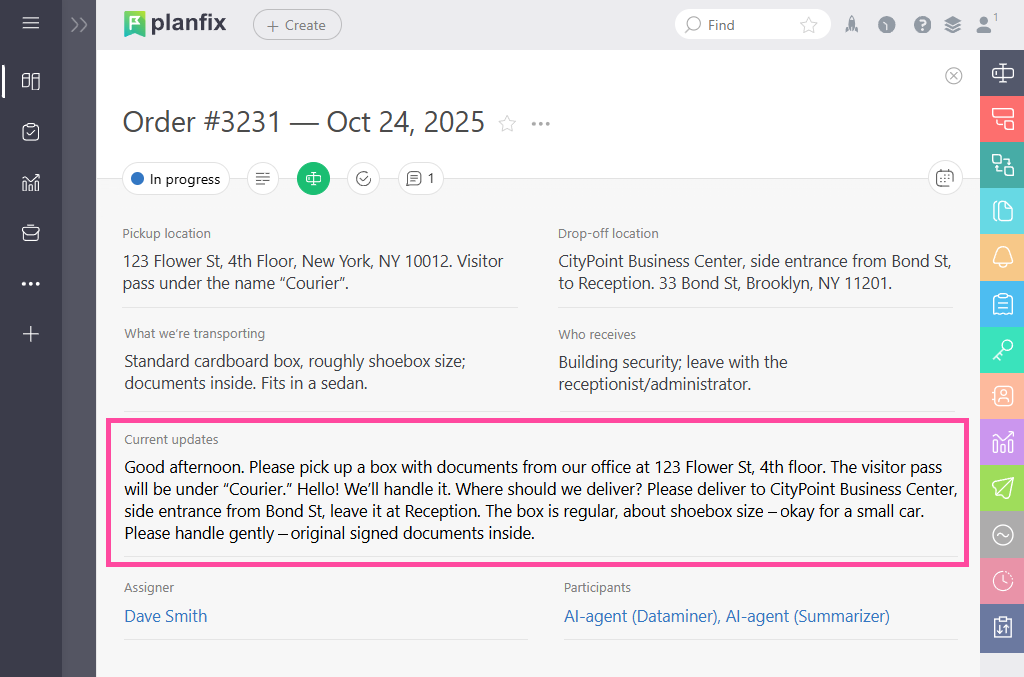
The Role of AI Agents in the Planfix Ecosystem
Planfix has always been about flexibility. That’s what allows you to build your own perfect workflow. But let’s be honest, flexibility can sometimes feel like a responsibility. Sometimes you just want to click a button and let the system handle the rest.
That’s where AI Agents come in.
Think of them as your own fleet of personal assistants. Sure, you could manually recreate most of what they do using scripts and Planfix AI, but why reinvent the wheel? An agent is already built, trained, and waiting for your signal to jump into the task.
We’ve specifically designed them to be:
● Simple to set up
● Free from automation headaches
● Instantly useful right out of the box
Add the right agent, and it starts working immediately – no onboarding, no tutorials, and no “please log into the sandbox environment.”
This approach is beneficial if you’re new to automation or just want things to run smoothly without extra setup.
And if you’re a power user or integrator who enjoys fine-tuning, everything advanced is still there, including automation scripts, Planfix AI, templates, and more. This means you’re free to mix and match everyday automation with scripts for complex scenarios that require more control.
Our goal is to make automation in Planfix easy to start, fun to explore, and powerful enough to grow with your needs. Because sometimes the best tech doesn’t replace you, but instead works quietly beside you.
Future of AI in Workflow Automation with Planfix
The story of Planfix AI Agents is just beginning. Soon, you’ll see new agents that don’t just analyze client conversations, but can turn them into something tangible: a polished document, a project brief, a meeting summary, or even a structured survey report.
We’re also developing a new generation of analytics agents – data-driven minds with a cool head and a sharp eye for insights. Imagine an agent that can scan all your tasks, extract client feedback, and organize it into clear categories. Think about it, marketers. You’ll finally be able to see what your clients are saying (and why)!
Overall, we’re moving toward AI assistants that don’t just “know things,” but that do things. The idea is for them to handle the background work so you and your team can focus on what truly matters: meaning, creativity, customer care, and, yes, coffee.
Now, a small request to the community. We’re collecting real business cases regarding where you believe a Planfix AI Agent could make a real difference. So, if you’ve spotted a process that could use smart automation, share it! Simply send your ideas to Support or describe your scenario in the comments. We’ll review, group, and bring the most useful agents to life.
And remember to keep an eye out for updates. This is only the beginning! 🧠✨

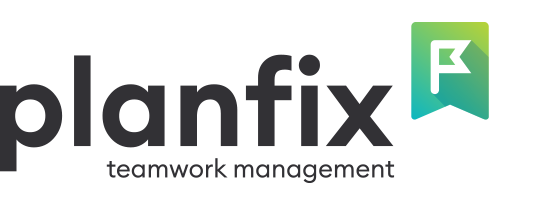
Planfix AI Agents really make work easier! Dataminer organizes data and Summarizer keeps tasks clear and updated. A real time-saver. Thanks to the team!